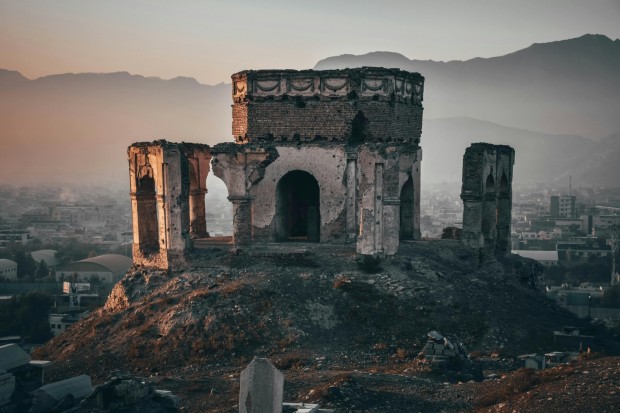Many planned buildings have yet to materialize due to various reasons such as financial constraints, political hurdles, or shifts in public opinion. These landmarks that were never constructed often leave behind a legacy of what might have been, which evokes both wonder and sadness.\
(Photo : Peel/Suliman Sallehi)
Xanadu Hotel
Shangri-La, the legendary Himalayan paradise, inspired a new hotel intended to be built on the Las Vegas Strip in 1975 by an investment group known as the Xanadu Corporation. The Xanadu Hotel's imaginative design featured a bar that was suspended in the air in a circular shape. Concealed columns would have sustained this structure to create the illusion of floating.
The authorities in Las Vegas approved the original proposal for the Xanadu Hotel; however, disagreements regarding the utilities and sewer connections in the area prevented the hotel from being constructed. The Excalibur Hotel and Casino currently occupies the location that was supposed to be used for Xanadu. When it opened its doors in 1990, the establishment, designed in a medieval style, was the largest hotel in the globe.
Opera Theater
Architect Zaha Hadid, Iraqi and British descent, was selected to create the first opera theater in the Persian Gulf region in 2007. A smaller theater with 800 seats, an art gallery, and a performing arts school were all included in Hadid's depiction of the futuristic complex in Dubai. The opera house contained 2,500 seats. It was the shape of dunes that served as inspiration for the soaring peaks.
Despite this, Hadid's plans for the complex of the Dubai Opera House were scrapped in 2009 due to the impact of the worldwide financial crisis. In 2016, Hadid passed away unexpectedly. Janus Rostock, who was responsible for the completion of new ideas, drew inspiration for his version of the structure from a dhow, a typical Arabic sailing boat.
Also Read: UK Water Industry Adopts 3D-Printed Components for Efficiency and Sustainability
Museum of Humankind
In 2019, Kenyan paleontologist Richard Leakey, who found the earliest fully developed human skeleton, revealed plans to build a Museum of Humankind to commemorate his work. As mentioned, the designs that Daniel Libeskind, an architect, created for the museum were influenced by hand axes, which were instruments that human ancestors utilized for more than 1.8 million years at the time. However, the museum's planned location in the Great Rift Valley of Kenya was abandoned after Leakey's untimely death in 2022. The design was scrapped, and replacement plans have yet to be disclosed. In 2007, it was reported that Zaha Hadid, an Iraqi and British architect, would be the designer of the first opera theater in the Persian Gulf.
Straßburger Münster
Since there was insufficient funding to construct it, the southern spire of the Liebfrauenmunster Cathedral in Strasbourg was never built. However, the world-renowned house of worship incorporates elements of German and French architecture, placing it among the tallest sandstone structures on the planet. Between 1176 and 1439, the church was constructed, and at 142 meters, it was regarded as the tallest building in the world until the year 1874. The implementation of the construction project was a collaborative effort between a number of renowned architects, including Erwin von Steinbach and Ulrich Ensinger.
The Straßburg Munster has become a symbol for the Alsace region due to its asymmetrical appearance, owing to the absence of the south tower. The 66-meter-high plateau, which was supposed to be the foundation for the construction of the southern tower, is now available to visitors as an observation platform, providing them with a breathtaking panoramic view of the city on the other side.
Related Article: Exceptional Architectural Projects That Never Came to Life







